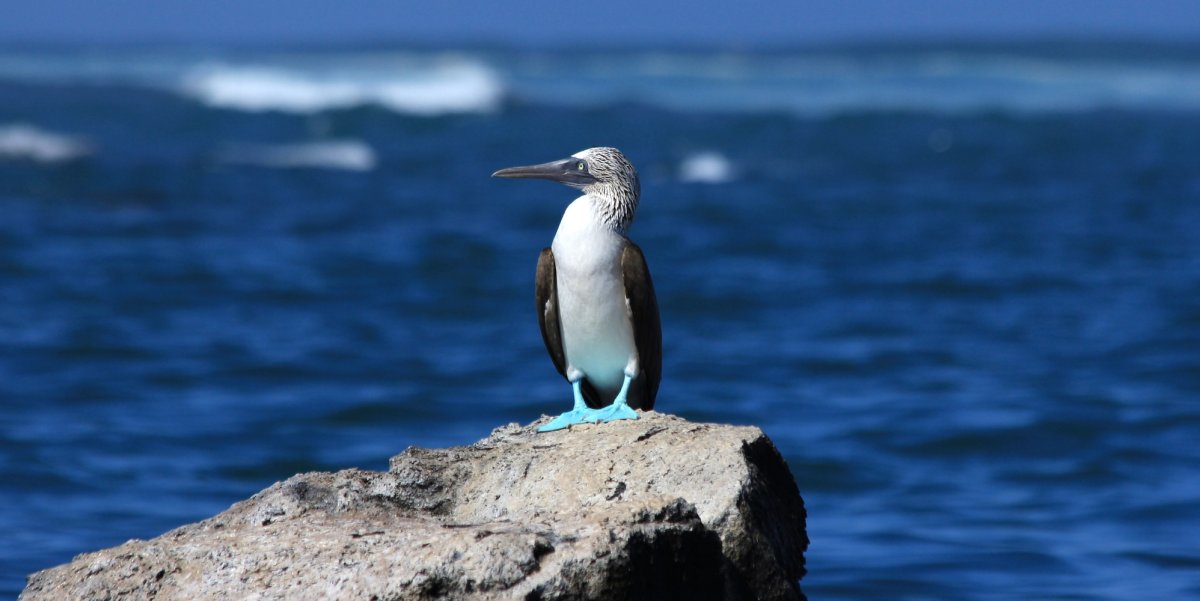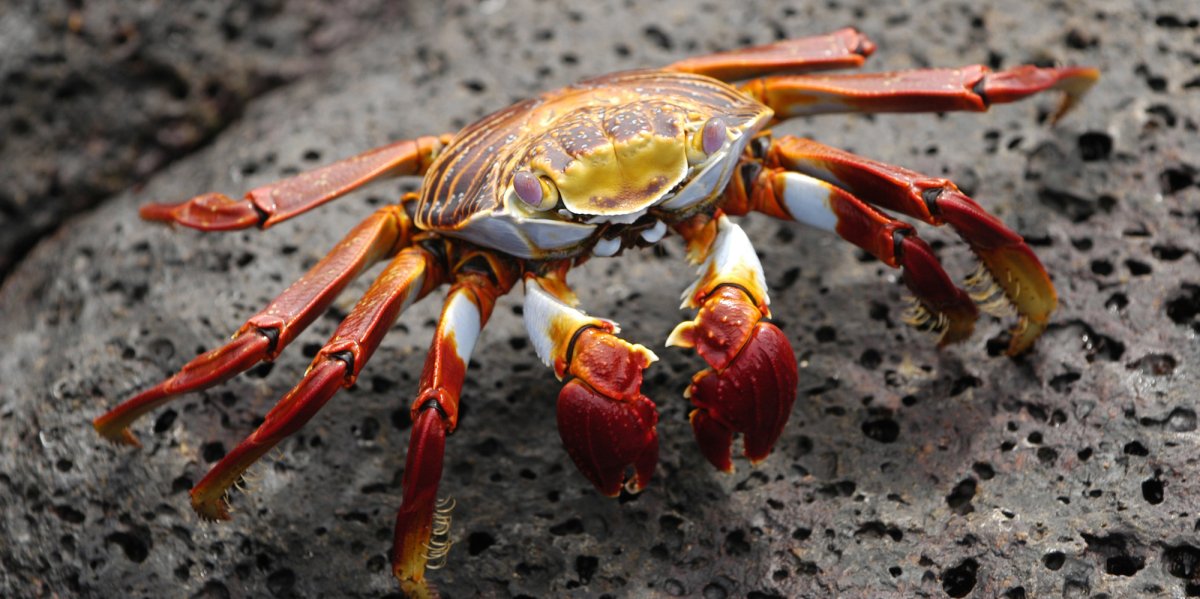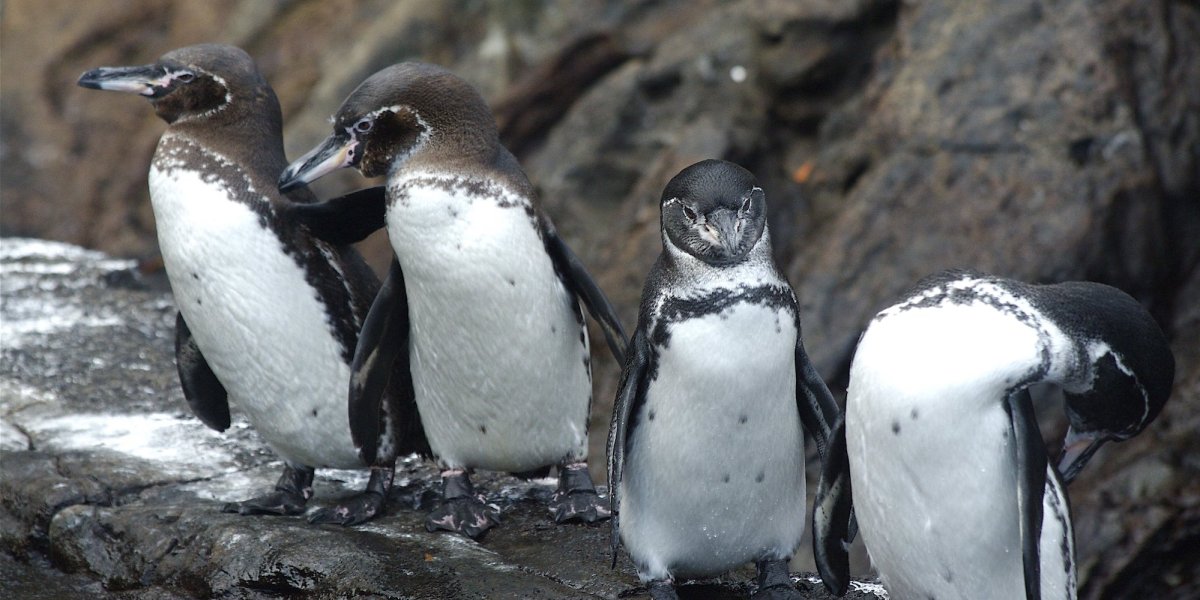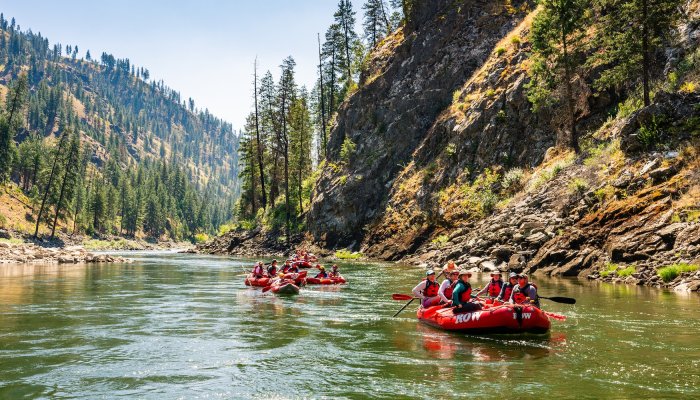Unique Wildlife of the Galapagos Islands
Around 600 miles off the coast of Ecuador are the Galapagos Islands, a volcanic archipelago that is home to wildlife seen nowhere else on Earth. The islands provided the inspiration for Charles Darwin’s theory of evolution and in 1978, it was one of the first UNESCO World Heritage Sites to be designated.
Because of the Galapagos Island’s remote setting and isolation, unique species have evolved here that have changed little since prehistoric times. While the islands were discovered in 1535, they remained largely uninhabited until the 19th century, allowing many species to thrive in great numbers.
Today, the Galapagos Islands’ wildlife is protected and experiencing this natural wonderland is high on the “bucket list” of many travelers. In this article, we’ll introduce some of the most iconic species found in the archipelago, all of which you’re likely to encounter on Galapagos Unbound Tours.

Galapagos Giant Tortoise (Chelonoidis niger)
One of the archipelago’s most recognizable creatures is the Galapagos giant tortoise, a land-dwelling tortoise that can grow up to five feet in length and weigh up to 900 pounds. It is the largest living species of tortoise in the world and was once almost hunted to extinction for its meat. This was due to the fact that they can last for up to a year without food or water, making them an ideal source of protein on long voyages.
Galapagos giant tortoises can live to well over 100 years in the wild and are native to seven of the Galapagos Islands. Interestingly, those that live in the humid highlands tend to be larger than their lowland-dwelling counterparts, as well as having more domed-shaped shells and shorter necks.
Since the 16th century, Galapagos giant tortoise numbers have declined significantly, from more than 250,000 to just 15,000 in the 1970s. Today, only 12 of the original 14 subspecies are still in existence. Due to ongoing conservation efforts, their numbers are once again on the rise, although all of the subspecies are classified as threatened by the International Union for Conservation of Nature (IUCN).

Galapagos Land Iguana (Conolophus subcristatus)
Often seen basking in the sun on the islands’ rocky shores is the Galapagos land iguana, which is endemic to the dry lowlands of seven Galapagos Islands (Fernandina, Isabela, Santa Cruz, North Seymour, Baltra, and South Plaza). They are usually yellow or brown in color, with distinctive spots along their ventral and dorsal flanks and a spiky spine that runs the length of their thick body.
Land iguanas can grow up to five feet in length and weigh around 25 pounds, with some known to live up to 60 years. They feed mainly on prickly-pear cacti, although they are also known to eat small invertebrates. Land iguanas survive by thermoregulation, which is why they are often observed crouched on the islands’ black volcanic rock.
In addition to Conolophus subcristatus, there are two other species of land iguanas - Conolophus pallidus, which is found on Santa Fe Island, and Conolophus marthae, or the “pink iguana” from the north of Isabela Island. On some of the islands, land iguanas have interbred with marine iguanas, resulting in a hybrid species.

Blue-Footed Boobies (Sula nebouxii)
Famed for their bright blue feet and mating dance, blue-footed boobies are native to the subtropical and tropical regions of the Pacific Ocean. The Galapagos Islands support around half of the global population’s breeding pairs, making this one of the best places to see them in the wild.
There are large colonies of blue-footed boobies on both Española and North Seymour Islands and they can often be seen plunging into the surrounding waters as they hunt for fish. Blue-footed boobies are known to dive from more than 65 feet above the water and hit its surface at speeds of up to 60 miles per hour.
Their distinctive blue feet is a sexually selected trait that is observed in males, who display them proudly as they strut in front of females during their mating ritual. The brightness of the blue reflects their diet and health, with males exhibiting bluer feet being more desirable. The best time to see this elaborate courtship ritual is between June and August.

Sally Lightfoot Crab (Grapsus grapsus)
Despite being one of the most commonly found crabs on the west coast of the Americas, seeing sally lightfoot crabs in the Galapagos Islands is always an impressive sight. Their bright red and blue bodies are in stark contrast to the black volcanic rock and when seen scurrying on mass, they give the illusion of flowing lava (hence the nickname “red lava crab”).
Sally lightfoot crabs have five pairs of legs, the front two of which are equipped with claws. They prefer to live on rocky shores where they feed on algae and attempt to elude their predators - octopi and moray eels. If you observe black or dark brown crabs, they may be juveniles, which are better camouflaged against their surrounding environment.
Sally lightfoot crabs are very agile and move incredibly quickly, which makes them hard to catch, although some local fishermen do use their meat for bait. Interestingly, Grapsus grapsus have been observed removing ticks from marine iguanas in what is a mutually-beneficial relationship.

Galapagos Flamingo (Phoenicopterus ruber)
Closely related to the greater and Chilean flamingos, the Galapagos flamingo is one of the most brightly colored flamingos in the world. They are smaller than the American or Caribbean flamingo and have black-tipped wings that are only visible when in flight.
Galapagos flamingos are social creatures that congregate in large groups, preferably in shallow bodies of water where they forage for food in the mud. You can often see them constructing mud nests in the lagoons fringing the Galapagos Islands and they are known to reproduce throughout the year.
In the Galapagos Islands, flamingos have a varied diet that includes crustaceans, worms, and algae. They shuffle their feet along the ground to disturb the mud and release any potential food before inverting their bills and filtering the water with their heads upside down.

Galapagos Penguin (Spheniscus mendiculus)
Endemic to the islands, the Galapagos penguin is the only penguin species found north of the Equator, with the cool and nutrient-rich waters of the Humboldt Current enabling their survival. The majority can be found on Fernandina Island and along the west coast of Isabela Island, although there are also small populations on Santiago, Bartolome, Santa Cruz and Floreana.
Galapagos penguins are relatively small, with most reaching around 20 inches in height and weighing between five and 10 pounds. They have black feathers on their back, head, and flippers, and a white belly and stripe that leads from their eyes to their chin.
Due to the archipelago’s harsh environment, Galapagos penguins prefer to nest in volcanic caves and crevices, with each keeping just one mate over the course of its lifetime. They have adapted to the unpredictable food supply of their equatorial environment by breeding throughout the year, rather than having a particular breeding season.

Galapagos Fur Seals (Arctocephalus galapagoensis)
Despite its name, the Galapagos fur seal is actually a sea lion and is one of the world’s smallest eared seals. They are endemic to the Galapagos Islands and have been protected by the Ecuadorian government since the 1930s due to their dwindling numbers.
Compared to the Galapagos sea lion (Zalophus wollebaeki), they have a much thicker outer coat, which starts out black before molting to reveal a light brown color. They also have larger eyes, which allows them to hunt at night. Males can be up to twice as heavy as females and significantly longer, growing up to five feet in length and weighing around 140 pounds.
Thanks to their large front flippers, Galapagos fur seals are adept at moving around on the rocky ledges they call “home” and can be found on nearly all of the Galapagos Islands. In the warmer months, they are also regularly seen swimming in the shallow waters of shady coves to cool themselves down.

Spotted eagle ray (Aetobatus narinari)
Easily recognizable due to their white-spotted backs, these predominantly black rays can be seen in Elizabeth Bay on Isabela Island and around Black Turtle Cove on Santa Cruz. Compared to other rays, their heads are pointier and they feature venomous, barbed stingers at the top of their long tails.
Spotted eagle rays are found in tropical regions around the globe and are usually observed alone as they hunt for fish or small crustaceans. They have also been seen leaping out of the water and burying their bodies into the sand of the sea bed.
While smaller than manta rays, spotted eagle rays can still have wingspans of up to 10 feet and can grow up to 16 feet in length from their nose to their tail. If you do encounter one of these majestic creatures while snorkeling or diving in the Galapagos Islands, it’s important to respect their space as they are known to use their venomous barb when threatened.
Turning the tide on extinction
While illegal fishing, hunting, and the introduction of non-native species have all had a devastating impact on the Galapagos Islands’ wildlife, conservation efforts are now in place to ensure this trend doesn’t continue. In 1998, the Galapagos Special Law was enacted and the Galapagos Marine Reserve was created, both of which have played an integral role in protecting the archipelago’s animals.
By visiting the Galapagos Islands on a responsibly-run trip, you’ll not only have the opportunity to witness to its incredible and unique wildlife but play your part in ensuring its natural wonders are protected for the long-term future.



